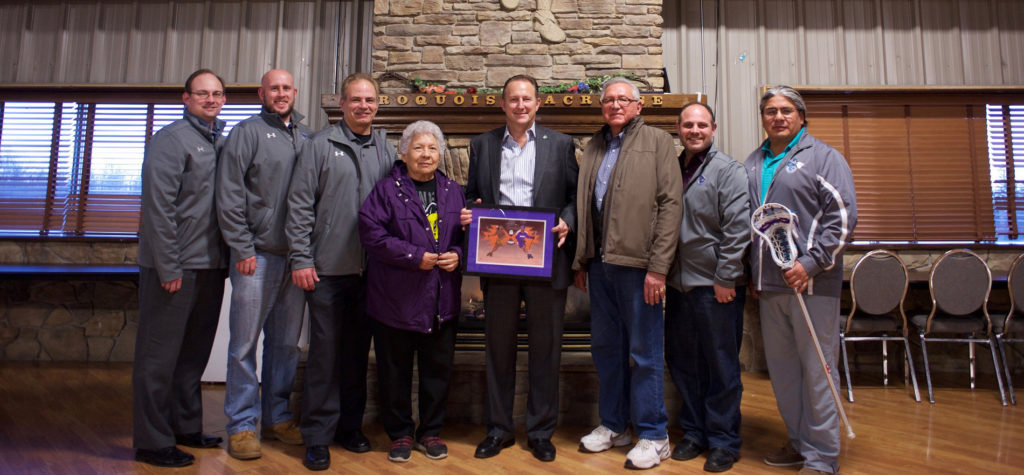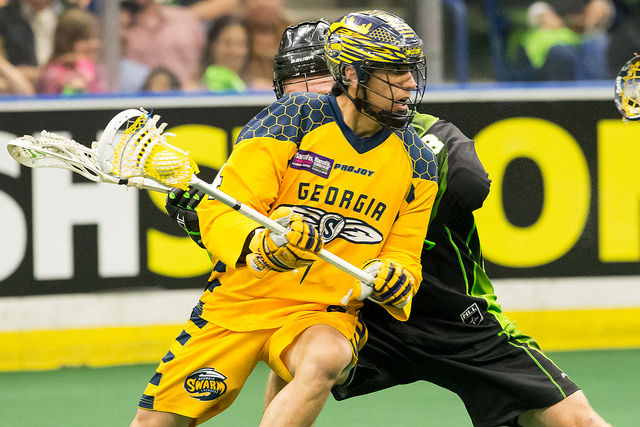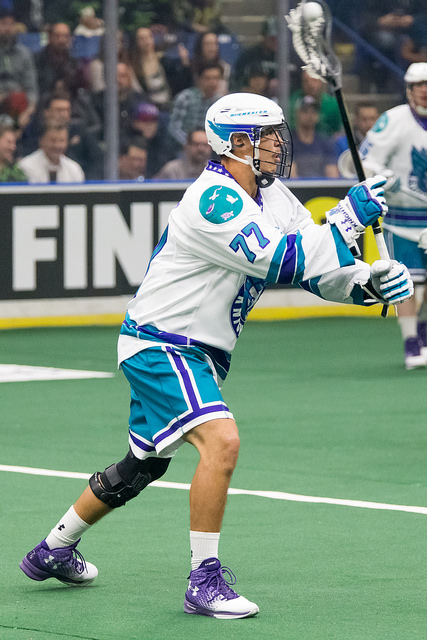
As Native American Heritage Month winds down, the National Lacrosse League would like to honor the Native American people for helping grow the game of lacrosse through the NLL and helping to make it into the incredible league that it is today.
“The roots of lacrosse tie deep into the history of the Native American culture.” States NLL Commisioner, Nick Sakiewicz, “We are very proud of the rich diversity found throughout the NLL. Today, the modern NLL benefits from numerous Native North Americans playing key roles in ownership, as players and club executives working to expand the League. We are honored to be affiliated with this great culture and represent the rich heritage in the National Lacrosse League.” While the game has been forever connected to native culture, the increase in Native American presence across the NLL over the past decade has grown exponentially.
In May of 2008, Curt Styres of the Mohawk tribe, became the first Native American owner of a National Lacrosse League team when he purchased 60% of the Rochester Knighthawks. The Knighthawks would become the first team in NLL history to win three straight titles (’12,13’,14’). In 2014, The Mohegan tribe bought part-ownership of the New England Black Wolves – the Black Wolves were previously the Philadelphia Wings under different ownership.
Today, the NLL is a leader in professional sports world-wide when it comes to representing Native Americans both on the field and in the front office. Brothers Darris, and Rich Kilgour of the Tuscarora Nation were staples for Buffalo Bandits both as players and then coaches for nearly 20 years each -their brother Travis also played for the Bandits in the nineties.
They were the league’s first Native American stars, giving hope to the next generations of native youth that they could achieve similar goals. Darris and Rich were inducted into the National Lacrosse League Hall of Fame in 2007 and 2010 respectively.
Many Native American lacrosse players from tribes all over North America attempted to follow in the NLL footsteps of the Kilgours. Over the last decade, each season (on average) Native American participation in the NLL has been higher than that of Americans, making them the 2nd largest ethnic group in the league only behind Canadian players. Generally boasting around two dozen Native Americans a season, a handful of those men have become impressive professional box lacrosse players.
Scorers such as Mohawk Delby Powless, a cousin to lacrosse legend, Gaylord Powless, put up solid numbers consistently during the early 2000’s, while goalie, Ken Montour, was superb between the pipes during that time. Over the last decade, Native American talent has collectively shined brighter than any other time in the leagues history.
Jeff Shattler of the Ojibwe Nation won the NLL MVP Award in 2011 as part of the Calgary Roughnecks. Cody Jamieson of the Mohawk tribe would become the second Native American to win the NLL MVP Award in 2014 playing for the Rochester Knighthawks.

Photo by Josh Schaefer/Saskatchewan Rush/GetMyPhoto.ca
This past season, the NLL MVP Award was won by Lyle Thompson of the Onondaga Nation. He and his brothers, Miles, Hiana, and Jeremy all are gifted players in the league. As a family, they are not only become the leading Native American players in the NLL – predominately Lyle and Miles who play for the Champions Cup winning Georgia Swarm – but the cream of the crop in the league.
Playing in the NLL is more than just a game for many of the Native American players, it is a way for them to pass down the tradition of their people’s game and is a way to give back to the Creator who gave the game to their people countless generations ago. “It’s a huge opportunity” says Knighthawks Forward, Quinn Powless of the Mohawk tribe, “I’m happy to be playing for my community, playing for them as much as I can.” Lyle Thompson shared similar sentiments stating, “When we have say 30 native players in the NLL, those players are being seen by 3000 kids, maybe more. These kids look at us and see that we came from where they’re from. They’re seeing that we can do it and they can do it to.”
NLL Commissioner, Nick Sakiewicz, understands where Lyle and Quinn are coming from. Shortly after he took over as commissioner, Sakiewicz made a concerted effort to engage himself with the Six Nations. Sakiewicz said, “I love the history of the game and its traditions up there.” With his grasp on history and the effort that the commissioner is putting forth to learn even more about importance of the history and culture that all Native American players carry with them as they play in the NLL. Sakiewicz has made key changes in the league including overhauling the league’s logo to include Native American symbols, as well as ensuring events take place to honor those in native communities.

Photo by Josh Schaefer/GetMyPhoto.ca
The logo is anchored by a four-pointed star, an acknowledgement of the four original NLL teams from the Mid-Atlantic region. The NLL Star serves as a guide, something to take the League into the future. It is also evocative of the Native American Morning Star, and pays homage to the roots of the sport and the tremendous influence of that community. A shield wraps the new NLL logo and reflects the warrior spirit of our Native American forbearers and current players, athletes who must exhibit superior strength of mind and body in order to compete at the ultimate level of the sport.
Each season, teams host a Native American Appreciation night to give thanks to the tribal communities nearest them. In many of the ceremonies leaders will perform a tribal dance and other rituals for the game. Even at this past year’s Fann Cup -an annual lacrosse game played by fans of the NLL- there was a Native American smoke dance included in the festivities.
The commissioner and the league will continue to make an effort to embrace Native American players and their history. Not only have the league’s stars, present and past, come from native tribes across North America, so too has the history and culture. We thank them for sharing the game and letting a broader community around the globe enjoy what will be forever be a Native American game.